Chrysler 2008 Annual Report Download - page 261
Download and view the complete annual report
Please find page 261 of the 2008 Chrysler annual report below. You can navigate through the pages in the report by either clicking on the pages listed below, or by using the keyword search tool below to find specific information within the annual report.-
 1
1 -
 2
2 -
 3
3 -
 4
4 -
 5
5 -
 6
6 -
 7
7 -
 8
8 -
 9
9 -
 10
10 -
 11
11 -
 12
12 -
 13
13 -
 14
14 -
 15
15 -
 16
16 -
 17
17 -
 18
18 -
 19
19 -
 20
20 -
 21
21 -
 22
22 -
 23
23 -
 24
24 -
 25
25 -
 26
26 -
 27
27 -
 28
28 -
 29
29 -
 30
30 -
 31
31 -
 32
32 -
 33
33 -
 34
34 -
 35
35 -
 36
36 -
 37
37 -
 38
38 -
 39
39 -
 40
40 -
 41
41 -
 42
42 -
 43
43 -
 44
44 -
 45
45 -
 46
46 -
 47
47 -
 48
48 -
 49
49 -
 50
50 -
 51
51 -
 52
52 -
 53
53 -
 54
54 -
 55
55 -
 56
56 -
 57
57 -
 58
58 -
 59
59 -
 60
60 -
 61
61 -
 62
62 -
 63
63 -
 64
64 -
 65
65 -
 66
66 -
 67
67 -
 68
68 -
 69
69 -
 70
70 -
 71
71 -
 72
72 -
 73
73 -
 74
74 -
 75
75 -
 76
76 -
 77
77 -
 78
78 -
 79
79 -
 80
80 -
 81
81 -
 82
82 -
 83
83 -
 84
84 -
 85
85 -
 86
86 -
 87
87 -
 88
88 -
 89
89 -
 90
90 -
 91
91 -
 92
92 -
 93
93 -
 94
94 -
 95
95 -
 96
96 -
 97
97 -
 98
98 -
 99
99 -
 100
100 -
 101
101 -
 102
102 -
 103
103 -
 104
104 -
 105
105 -
 106
106 -
 107
107 -
 108
108 -
 109
109 -
 110
110 -
 111
111 -
 112
112 -
 113
113 -
 114
114 -
 115
115 -
 116
116 -
 117
117 -
 118
118 -
 119
119 -
 120
120 -
 121
121 -
 122
122 -
 123
123 -
 124
124 -
 125
125 -
 126
126 -
 127
127 -
 128
128 -
 129
129 -
 130
130 -
 131
131 -
 132
132 -
 133
133 -
 134
134 -
 135
135 -
 136
136 -
 137
137 -
 138
138 -
 139
139 -
 140
140 -
 141
141 -
 142
142 -
 143
143 -
 144
144 -
 145
145 -
 146
146 -
 147
147 -
 148
148 -
 149
149 -
 150
150 -
 151
151 -
 152
152 -
 153
153 -
 154
154 -
 155
155 -
 156
156 -
 157
157 -
 158
158 -
 159
159 -
 160
160 -
 161
161 -
 162
162 -
 163
163 -
 164
164 -
 165
165 -
 166
166 -
 167
167 -
 168
168 -
 169
169 -
 170
170 -
 171
171 -
 172
172 -
 173
173 -
 174
174 -
 175
175 -
 176
176 -
 177
177 -
 178
178 -
 179
179 -
 180
180 -
 181
181 -
 182
182 -
 183
183 -
 184
184 -
 185
185 -
 186
186 -
 187
187 -
 188
188 -
 189
189 -
 190
190 -
 191
191 -
 192
192 -
 193
193 -
 194
194 -
 195
195 -
 196
196 -
 197
197 -
 198
198 -
 199
199 -
 200
200 -
 201
201 -
 202
202 -
 203
203 -
 204
204 -
 205
205 -
 206
206 -
 207
207 -
 208
208 -
 209
209 -
 210
210 -
 211
211 -
 212
212 -
 213
213 -
 214
214 -
 215
215 -
 216
216 -
 217
217 -
 218
218 -
 219
219 -
 220
220 -
 221
221 -
 222
222 -
 223
223 -
 224
224 -
 225
225 -
 226
226 -
 227
227 -
 228
228 -
 229
229 -
 230
230 -
 231
231 -
 232
232 -
 233
233 -
 234
234 -
 235
235 -
 236
236 -
 237
237 -
 238
238 -
 239
239 -
 240
240 -
 241
241 -
 242
242 -
 243
243 -
 244
244 -
 245
245 -
 246
246 -
 247
247 -
 248
248 -
 249
249 -
 250
250 -
 251
251 -
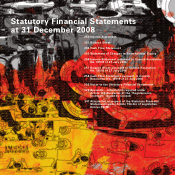 252
252 -
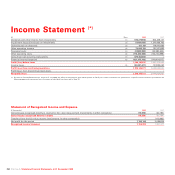 253
253 -
 254
254 -
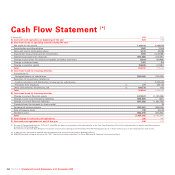 255
255 -
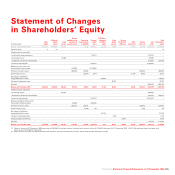 256
256 -
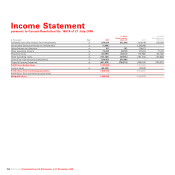 257
257 -
 258
258 -
 259
259 -
 260
260 -
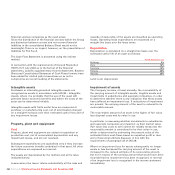 261
261 -
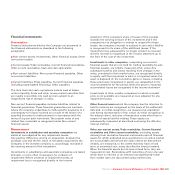 262
262 -
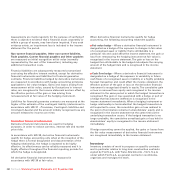 263
263 -
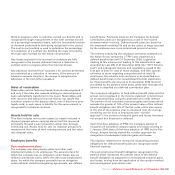 264
264 -
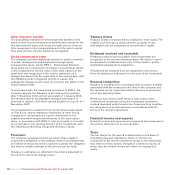 265
265 -
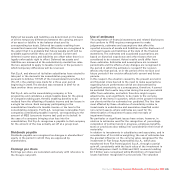 266
266 -
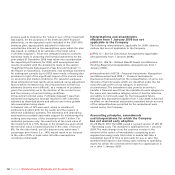 267
267 -
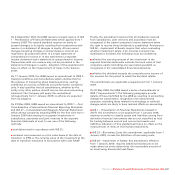 268
268 -
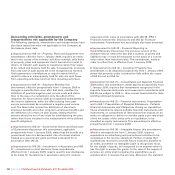 269
269 -
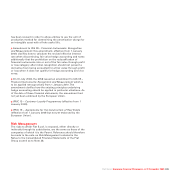 270
270 -
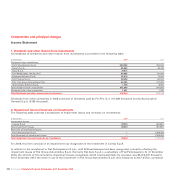 271
271 -
 272
272 -
 273
273 -
 274
274 -
 275
275 -
 276
276 -
 277
277 -
 278
278 -
 279
279 -
 280
280 -
 281
281 -
 282
282 -
 283
283 -
 284
284 -
 285
285 -
 286
286 -
 287
287 -
 288
288 -
 289
289 -
 290
290 -
 291
291 -
 292
292 -
 293
293 -
 294
294 -
 295
295 -
 296
296 -
 297
297 -
 298
298 -
 299
299 -
 300
300 -
 301
301 -
 302
302 -
 303
303 -
 304
304 -
 305
305 -
 306
306 -
 307
307 -
 308
308 -
 309
309 -
 310
310 -
 311
311 -
 312
312 -
 313
313 -
 314
314 -
 315
315 -
 316
316 -
 317
317 -
 318
318 -
 319
319 -
 320
320 -
 321
321 -
 322
322 -
 323
323 -
 324
324 -
 325
325 -
 326
326 -
 327
327 -
 328
328 -
 329
329 -
 330
330 -
 331
331 -
 332
332 -
 333
333 -
 334
334 -
 335
335 -
 336
336 -
 337
337 -
 338
338 -
 339
339 -
 340
340 -
 341
341 -
 342
342 -
 343
343 -
 344
344 -
 345
345 -
 346
346 -
 347
347 -
 348
348 -
 349
349 -
 350
350 -
 351
351 -
 352
352 -
 353
353 -
 354
354 -
 355
355 -
 356
356
 |
 |

Fiat S.p.A. Statutory Financial Statements at 31 December 2008260
financial services companies as the need arises.
Given the distribution of the financial services within the Group
any distinction between current and non-current financial
liabilities in the consolidated Balance Sheet would not be
meaningful. There is no impact, however, on the presentation of
liabilities for Fiat S.p.A.
The Cash Flow Statement is presented using the indirect
method.
In connection with the requirements of Consob Resolution
15519 of 27 July 2006 as to the format of the financial
statements, specific supplementary Income Statement, Balance
Sheet and Consolidated Statement of Cash Flows formats have
been added for related party transactions so as not to
compromise an overall reading of the statements.
Intangible assets
Purchased or internally-generated intangible assets are
recognised as assets in accordance with IAS 38 –
Intangible
Assets
, where it is probable that the use of the asset will
generate future economic benefits and where the costs of the
asset can be determined reliably.
Intangible assets with finite useful lives are measured at
purchase or manufacturing cost, net of amortisation charged
on a straight-line basis over their estimated useful lives and of
any impairment losses.
Property, plant and equipment
Cost
Property, plant and equipment are stated at acquisition or
production cost, net of accumulated depreciation and any
impairment losses, and are not revalued.
Subsequent expenditures are capitalised only if they increase
the future economic benefits embodied in that asset. All other
expenditures are expensed as incurred.
The assets are depreciated by the method and at the rates
indicated below.
Leases where the lessor retains substantially all the risks and
rewards of ownership of the assets are classified as operating
leases. Operating lease expenditures are expensed on a
straight-line basis over the lease terms.
Depreciation
Depreciation is calculated on a straight-line basis over the
estimated useful life of an asset as follows:
Annual depreciation rate
Buildings 3%
Plant 10%
Furniture 12%
Fixtures 20%
Vehicles 25%
Land is not depreciated.
Impairment of assets
The Company reviews, at least annually, the recoverability of
the carrying amount of intangible assets, tangible assets and
investments in subsidiaries and associate companies, in order
to determine whether there is any indication that those assets
have suffered an impairment loss. If indications of impairment
are present, the carrying amount of the asset is reduced to its
recoverable amount.
The recoverable amount of an asset is the higher of fair value
less disposal costs and its value in use.
In particular, in assessing whether investments in subsidiaries
and associate companies are impaired, as their market value
(fair value less costs to sell) cannot be reliably measured, the
recoverable amount is considered to be their value in use,
which is determined by estimating the present value of the
estimated future cash flows based on expected profit or loss
and a theoretical ultimate disposal, in line with the
requirements of paragraph 33 of IAS 28.
Where an impairment loss for assets subsequently no longer
exists or has decreased the carrying amount of the asset is
increased to the revised estimate of its recoverable amount,
but not in excess of the carrying amount that would have been
recorded had no impairment loss been recognised. A reversal
of an impairment loss is recognised in the income statement
immediately.
